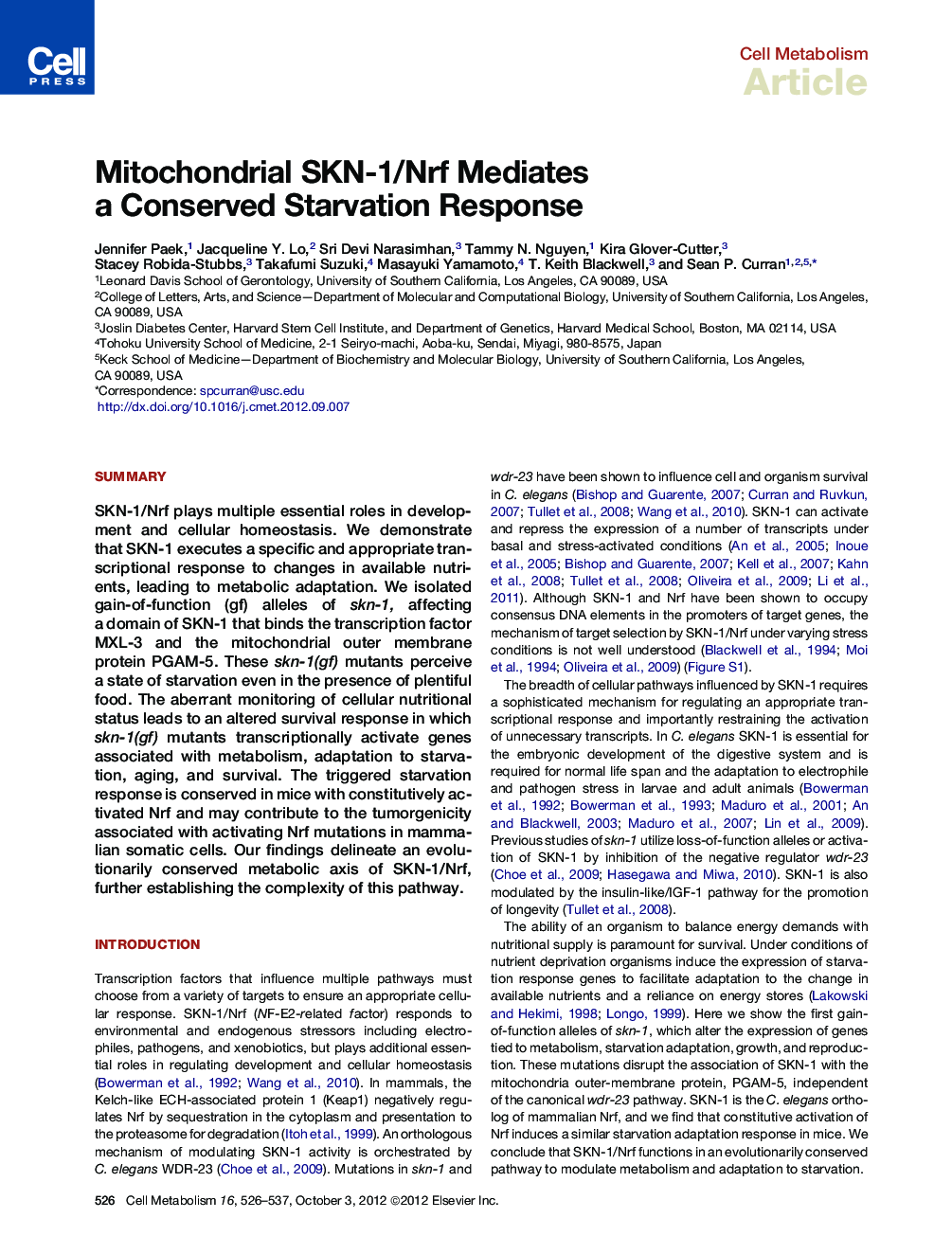| Article ID | Journal | Published Year | Pages | File Type |
|---|---|---|---|---|
| 2792786 | Cell Metabolism | 2012 | 12 Pages |
SummarySKN-1/Nrf plays multiple essential roles in development and cellular homeostasis. We demonstrate that SKN-1 executes a specific and appropriate transcriptional response to changes in available nutrients, leading to metabolic adaptation. We isolated gain-of-function (gf) alleles of skn-1, affecting a domain of SKN-1 that binds the transcription factor MXL-3 and the mitochondrial outer membrane protein PGAM-5. These skn-1(gf) mutants perceive a state of starvation even in the presence of plentiful food. The aberrant monitoring of cellular nutritional status leads to an altered survival response in which skn-1(gf) mutants transcriptionally activate genes associated with metabolism, adaptation to starvation, aging, and survival. The triggered starvation response is conserved in mice with constitutively activated Nrf and may contribute to the tumorgenicity associated with activating Nrf mutations in mammalian somatic cells. Our findings delineate an evolutionarily conserved metabolic axis of SKN-1/Nrf, further establishing the complexity of this pathway.
Graphical AbstractFigure optionsDownload full-size imageDownload high-quality image (195 K)Download as PowerPoint slideHighlights► Identification of a novel regulatory domain in SKN-1 that binds MXL-3 and PGAM-5 ► A pool of SKN-1 associates with the mitochondria ► Gain-of-function mutations in skn-1 induce conserved starvation responses ► Constitutive activation of mouse Nrf activates starvation pathways
